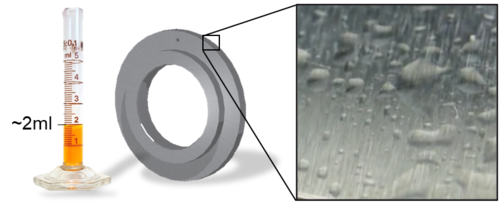Resource efficiency through self-lubrication of highly loaded machine elements exemplified by oil impregnated sintered gears; Sub-Project: Tribometry
Research Topic
| Short Title | SinziA |
| Start of Project | Q4/2020 |
| Funding | BMWK 03LB3001A Federal Ministry for Economic Affairs and Climate Action, BMWK |
| Project Partners | Getriebebau NORD GmbH OSK Kiefer GmbH Miba Sinter GmbH Hilti AG |
| Contact | Dr.-Ing. T. Lohner |
Project Description
Impregnation of sintered machine elements with liquid lubricants allows the self-lubrication of appropriate technical applications. The principle of self-lubrication derives, inter alia, from human knee joints, where porous structures at the surface of menisci offer reservoirs and drains for joint fluid. Upon loading, liquid bleeds out of the open-pored surface to lubricate the joint and retracts when the joint is unloaded. This demand-driven provision of sufficient lubricant (see figure) has successfully been transferred to lowly loaded technical systems to reduce space and weight requirements, the demand for greenhouse gas-intensive lubricants and the power losses by simplification of engineering designs.
The self-lubrication by oil-impregnated sintered material has not yet been adapted for highly loaded applications. Therefore, this transfer project aims to extend its range of application to high loads, using the example of oil-impregnated sintered gears. This opens up possibilities for a large variety of potential cross-sector applications. An established network of industry and research systematically performs advances in this technology by experimental investigations under laboratory conditions as well as investigations under industrial and real operating conditions. The experiments will be combined with high-resolution analytics to derive application-oriented design guidelines for self-lubricated and highly loaded machine elements. Due to the high potential in a variety of applications, self-lubrication is a very promising technology for lightweight and resource-efficient drive systems, and offers a large-scale effect for CO2 savings.
